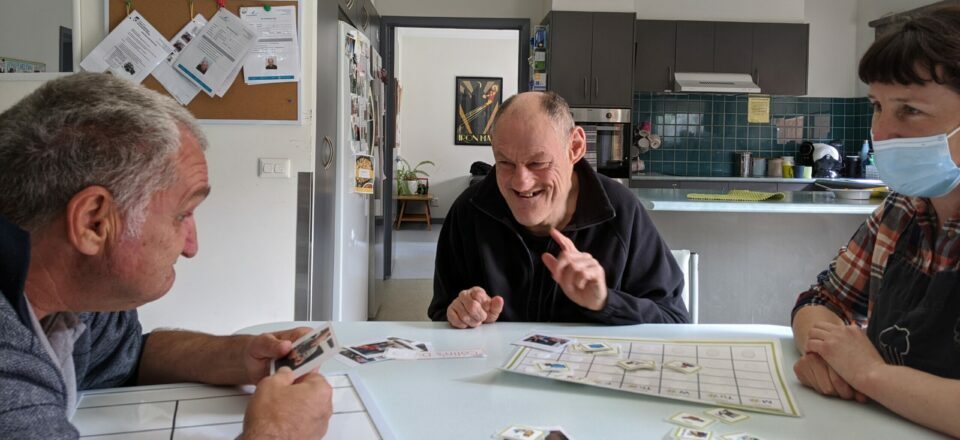Dysphagia is a medical condition where a person has difficulty swallowing food, liquids, or saliva. It can occur at any age but is more common in older adults or those with certain health conditions. Dysphagia can lead to malnutrition, dehydration, and other serious health issues if not managed properly.
Importance of Managing Dysphagia in Daily Life:
Managing dysphagia is very important for staying healthy and feeling good. When swallowing problems are not managed, they can cause serious issues. These include not getting enough food or water, and getting sick because food or drink may go into the lungs.
When dysphagia is managed well, these problems can be prevented. It helps to make sure that you or the person you care for gets the right food and drinks to stay healthy. Managing dysphagia also means you can still enjoy meals with family and friends. This helps you feel connected and supported, and reduces feelings of isolation.
This blog will give you simple tips and strategies to manage dysphagia in daily life. If you are caring for someone with dysphagia or have it yourself, this blog will help you understand how to:
Choose safe foods and drinks
Prepare meals that are easy to swallow
Take care of yourself or the person you care for
The goal is to help you make informed decisions about diet, meal preparation, and overall care.
Understanding Dysphagia
What is Dysphagia?
Dysphagia means having trouble swallowing. This can make it hard to move food, drinks, or even saliva from your mouth to your stomach. It can happen when there is a problem with your mouth, throat, or oesophagus, which is the tube that connects your mouth to your stomach. Sometimes, swallowing problems are mild, but they can also be very serious.
Common Causes and Symptoms
Health conditions: Problems like stroke, Parkinson's disease, or multiple sclerosis can affect the muscles and nerves needed for swallowing.
Blockages or changes: Conditions like a narrowed oesophagus or a tumour can make it hard to swallow.
Muscle issues: Diseases that weaken muscles, like muscular dystrophy, can make swallowing difficult.
Ageing: As people get older, changes in muscle strength and coordination can affect swallowing.
Common signs of dysphagia include:
Coughing or choking when eating or drinking
Feeling like food is stuck in your throat or chest
Difficulty chewing or moving food in your mouth
Frequent throat clearing
Drooling or spilling food or drinks from your mouth
Losing weight or becoming dehydrated because eating and drinking are hard
Dysphagia can affect daily life in many ways. Eating and drinking can become difficult and sometimes dangerous. People with dysphagia might feel anxious or embarrassed during mealtimes, which can lead to avoiding social situations. The condition can cause discomfort and frustration, making simple tasks like eating a challenge. It also increases the risk of choking or developing infections from food or liquids entering the lungs. Managing dysphagia well helps improve quality of life and keeps people healthy and safe.
Explore how Scope Australia's specialised training in mealtime management can equip you with the skills and knowledge to effectively handle dysphagia, improving quality of life for those affected. Learn practical strategies and techniques tailored to manage mealtime challenges with confidence.
Practical Tips and Strategies for Managing Dysphagia in Daily Life
1. Meal Planning and Preparation
When planning meals for someone with dysphagia, it is important to choose foods that are easier to swallow. Soft foods like mashed potatoes, yoghourt, and applesauce are good options. Avoid hard, dry, or sticky foods that can be difficult to swallow. Liquids should be thickened if needed to prevent choking.
Modifying the texture of food can make swallowing easier. Foods can be pureed, minced, or finely chopped to make them safer and more manageable. It is important to follow any specific texture guidelines provided by a healthcare professional. Balancing nutrition is also crucial. Make sure meals include a variety of foods to provide all the necessary vitamins and minerals. Even with texture modifications, maintaining a healthy diet will help support overall health and well-being.
2. Safe Swallowing Techniques
To help with safe swallowing, it is important to sit in the right position during meals. Sit up straight with your back supported and your head slightly tilted forward. This position helps food and liquids move more easily down your throat.
There are also techniques to reduce the risk of choking. Take small bites and sips, and chew food well before swallowing. Avoid talking or laughing while eating, as this can increase the risk of choking. Eating slowly and mindfully is important. Take your time with each bite and sip, and focus on chewing thoroughly. This can help prevent choking and make mealtimes more comfortable.
3. Hydration Tips
For people with dysphagia, thickened liquids can make drinking safer. Thickened liquids are used to help prevent choking and aspiration. They come in different thickness levels, such as nectar-thick or pudding-thick. Use thickening agents as recommended by a healthcare professional to achieve the right consistency.
Staying hydrated is important, but it needs to be done safely. Always drink liquids that are the right thickness for your needs. If you have trouble with plain water, you can try alternatives like flavoured water, broth, or herbal teas. These options can help make drinking more enjoyable while ensuring you stay hydrated.
4. Adapting to Social Situations
Dining out with dysphagia can be challenging, but it is possible with a little planning. Before you go to a restaurant, call ahead to discuss your needs. Ask if they can prepare dysphagia-friendly meals or modify dishes to suit your needs. Bring any special utensils or thickening agents if necessary.
When attending social events and gatherings, let your hosts know about your dietary needs in advance. This way, they can help accommodate your requirements. It is also important to communicate your needs clearly and confidently. Don’t hesitate to ask for help or adjustments to make mealtime more comfortable. With these tips, you can enjoy social occasions while managing dysphagia.
5. Assistive Devices and Tools
There are several helpful tools for people with dysphagia. Special utensils like weighted spoons and forks can make eating easier. Cups with spouts or handles can help with drinking. These tools are designed to make mealtime safer and more comfortable.
To choose the right assistive devices, consider your specific needs. Think about what will help you eat and drink more easily. Ask your healthcare provider or speech therapist for recommendations. You can find these tools at medical supply stores, online retailers, or through healthcare providers.
6. Working with Healthcare Professionals
Speech-language pathologists are experts who help with swallowing difficulties. They can assess your swallowing ability, provide exercises, and recommend changes to your diet or mealtime practices. They play a key role in managing dysphagia.
It is important to seek help if you notice any swallowing problems or if your condition changes. Regular check-ups with your healthcare provider can help monitor your progress and adjust your care plan as needed. Working with professionals to create a personalised care plan ensures that your specific needs are met and helps you manage dysphagia effectively.
7. Coping with the Emotional Impact
Living with dysphagia can be emotionally challenging. It can cause feelings of frustration, anxiety, or embarrassment about eating and drinking. It is important to acknowledge these feelings and seek support when needed.
Support groups and resources can be very helpful. They offer a space to connect with others who understand what you are going through. Talking to a counsellor or joining a support group can provide emotional support and practical advice.
To maintain a positive mindset, focus on what you can control. Celebrate small successes and set realistic goals for yourself. Surround yourself with supportive friends and family who understand your needs and can offer encouragement.
Conclusion
To manage dysphagia effectively, remember these key tips: choose dysphagia-friendly foods, modify textures for easier swallowing, and use safe swallowing techniques. Stay hydrated with thickened liquids if needed and use assistive devices to make eating and drinking easier. Communicate your needs clearly in social situations and work with healthcare professionals to create a care plan tailored to you. Coping with the emotional impact is important to—seek support and maintain a positive mindset. By staying proactive and following these strategies, you can improve your quality of life and enjoy mealtimes more comfortably.
If you are looking for Mealtime Management (Dysphagia) Training, choose Scope Australia. We offer top-quality training designed to help you manage dysphagia effectively. Our expert-led courses provide practical strategies and tools to ensure safe and comfortable mealtimes. With Scope Australia, you can gain the skills and knowledge needed to enhance care and improve quality of life for those affected by dysphagia.


